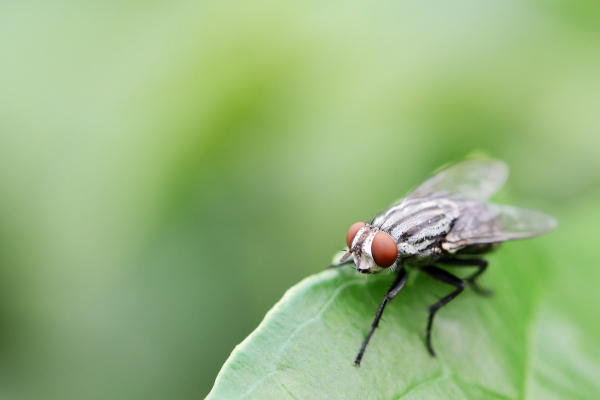Your cart is currently empty!

25 Aug House Flies: Myths and Misconceptions
House flies are a common sight in our daily lives. These small, winged insects often buzz around our homes, outdoor spaces, and food sources, leading to various beliefs and misconceptions about their behaviour and impact. Unfortunately, many of these beliefs are based on misinformation or exaggerated claims. In this article, we will separate facts from fiction and debunk common house flies myths and misconceptions surrounding house flies. By challenging these misconceptions and offering accurate information, we can gain a better understanding of these insects and make informed decisions about fly control and prevention.
Myth 1: House flies live for 24 hours.
One of the most common misconceptions about house flies is their short lifespan of just 24 hours. While it is true that individual houseflies have relatively short lifespans, typically ranging from 15 to 30 days, the belief that they live for only 24 hours is inaccurate. House flies go through a complete life cycle, including egg, larva (maggot), pupa, and adult stages. The entire life cycle can take anywhere from 7 to 30 days, depending on environmental conditions. It’s important to note that during their adult stage, house flies can reproduce and spread diseases, making effective fly control measures essential.
Myth 2: House flies bite.
Contrary to popular belief, house flies do not bite humans. House flies have sponging mouthparts that are designed for lapping up liquids. They feed by regurgitating digestive enzymes onto solid food sources, liquefying them, and then sponging up the resulting liquid. While they may land on human skin, they cannot bite or pierce the skin. However, house flies can carry and spread disease-causing pathogens, making it important to minimize their presence in areas where food is prepared or consumed.
Myth 3: House flies only breed in dirty environments.
While it is true that house flies are commonly found in areas with decaying organic matter, such as garbage bins or animal waste, they can also breed in clean environments under certain conditions. House flies require organic matter as a food source for their larvae, but the quality and type of organic matter can vary. They are opportunistic feeders and can lay their eggs in a wide range of substrates, including fresh animal faeces, decaying vegetation, or even moist soil. It’s important to practice proper sanitation and waste management to minimize the potential breeding sites for house flies, regardless of the cleanliness of your surroundings.
Myth 4: Houseflies are carriers of all diseases.
While house flies are known to carry disease-causing pathogens, they are not carriers of all diseases. They can pick up pathogens from their feeding and breeding sites and transfer them to surfaces or food through contact. Common diseases associated with house flies include diarrhoea-causing bacteria like Salmonella and E. coli, as well as parasites like certain species of worms. However, not every fly is infected, and not every encounter with a fly will result in disease transmission. Proper hygiene, sanitation practices, and effective fly control measures are crucial in minimizing the risks associated with house flies.
Myth 5: House flies are attracted to light.
Contrary to popular belief, house flies are not strongly attracted to light. They are more active during the day and are typically drawn to food sources, moisture, and odours. While they may be observed near windows or light fixtures, it is not because they are specifically attracted to the light itself. House flies navigate using visual cues and tends to follow light patterns, which may explain their presence near light sources. However, relying on light traps alone is not an effective method for controlling house flies.
By separating facts from fiction and challenging common misconceptions about house flies, we can make more informed decisions and adopt effective strategies for fly control. Understanding their behaviour, life cycle, and the risks they pose allows us to implement targeted prevention and control measures. Remember, effective fly control requires a comprehensive approach that addresses sanitation, entry points, and population reduction. By taking proactive steps and staying informed, we can minimize the presence of house flies and create a more comfortable and hygienic living environment for ourselves and our loved ones.
If you’re tired of dealing with buzzing house flies and want an effective solution, we have the answer for you. Visit the Environmental Factor website and discover the Nema Globe EFI Sticky Traps. These innovative traps are designed specifically for house flies and will help you significantly reduce their population. Take control of your fly problem today and create a cleaner, more hygienic environment for you and your family.


